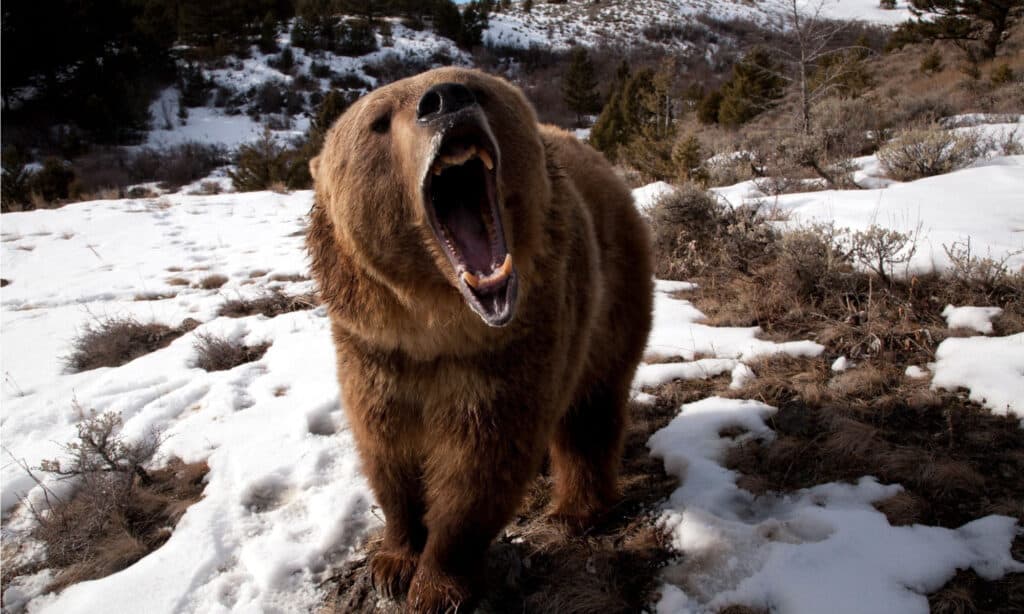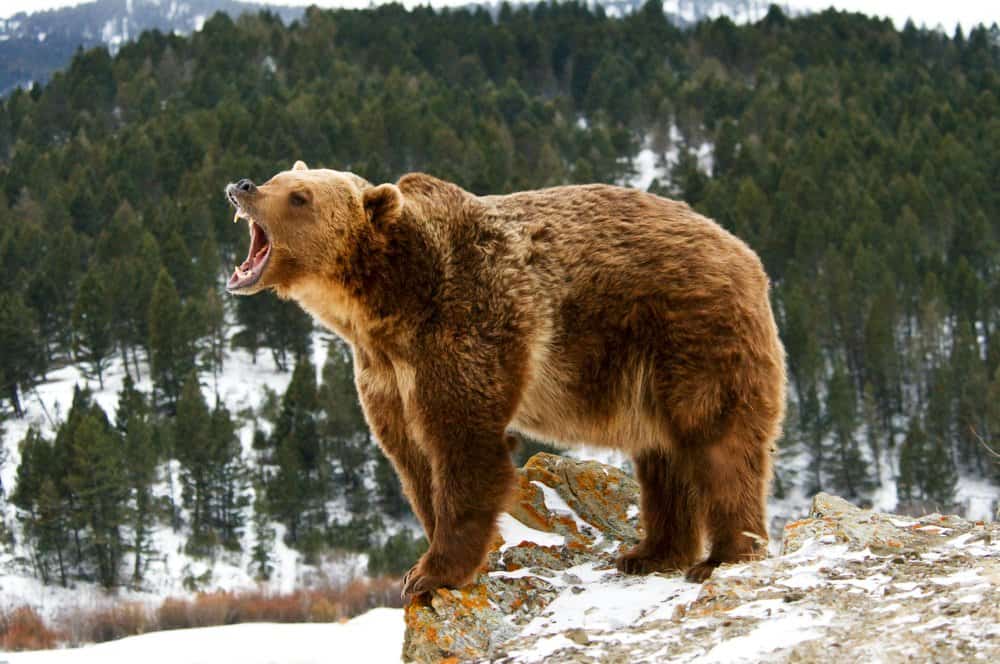Quick Answer
- Grizzlies have not been sighted in Colorado since 1952.
- They were formally ruled to be extinct from the area at this time.
Grizzly bears, also known simply as grizzly, are a population or subspecies of brown bears that inhabit North America, Asia, and Europe. Grizzly bears used to range from Alaska to Mexico, and as far east as the western shores of Hudson Bay. Currently, they only exist in Alaska, western Canada, and sections of the northwest United States. Grizzly bears are one of the most aggressive and dangerous bears you may encounter. Colorado is home to many wild animals, including mountain lions, coyotes, rattlesnakes, tarantulas, and black bears. But are there also grizzly bears in Colorado?
Thousands of grizzly bears once lived in Colorado. With the arrival of European settlers in the 1800s, America’s previously thriving population of these mighty and ferocious animals began to dwindle. Furthermore, an administration-subsidized program for hunters pointed toward lessening their populace. Their species was driven into an increasingly small residence zone until their last holdout was a little segment in the southern piece of the San Juan Mountain Range. Grizzlies have not been sighted in Colorado since 1952. Let’s learn more about grizzly bears in Colorado, including their habitats, nutrition, and other interesting facts below.
Are There Grizzly Bears in Colorado?

Grizzly bears are no longer in Colorado.
©Falade Adewale/Shutterstock.com
The answer is probably “no more”. The Rocky Mountains of Colorado used to be home to grizzly bears, and portions of the San Juan Mountains seem like they would be ideally suited for these bears to thrive. For inland bears gauging as much as 700 pounds, grizzlies not only go after similar food sources as humans but also represent a genuine danger to their safety. In light of this, residents in Colorado almost took the species to extinction through unregulated hunting until the 1950s when defensive regulations came to light. However, at that point, it was past time to save what was left of the remaining grizzly bears in the state, and grizzly bears were formally ruled to be extinct from Colorado in 1952.
While grizzly bears are presumably a distant memory from Colorado, they live in different places in the United States, such as Alaska, Washington, Idaho, Montana, Wyoming, and south through much of western Canada. Their expulsion from Colorado addresses an undeniable truth: developing populations present genuine and, sometimes, irreversible effects on wildlife.
What Do Grizzly Bears in Colorado Look Like?

Grizzly bears are typically brown with darker legs and a commonly white or blond-tipped coat on the flank and back.
©Scott E Read/Shutterstock.com
Although variable in color from blond to nearly black, grizzly bears are typically brown with darker legs and a commonly white or blond-tipped coat on the flank and back. However, it’s worth mentioning that claims floating around the Internet guaranteeing grizzly bear sightings in Colorado may be instances of misidentification and misinformation. Almost certainly, grizzly-finding reports are black bear sightings confused with the spotting of a grizzly. As per one ongoing report, the black bear population in Colorado is rising, putting their number at around 19,000 in the Centennial State (contrast this with about 1,400 wild grizzlies left in the whole American West). While a black bear’s name suggests that this species is dark in color, that is not generally the case.
Black bears are usually black, but they can also be brown, cinnamon-colored, or even white. It is also essential to consider the misinformation about the size of the two. While they’re often depicted as being much smaller animals than grizzlies, some black bears can weigh up to 800 pounds. Most female grizzlies top out at less than 450 pounds, and while male grizzlies are more massive, they still tend to be less than 850 pounds when they are full-grown.
Where Are Grizzly Bears Found in Colorado?
Today, all of the known grizzly bears are kept in zoos or animal shelters. If you merely want a close look at this mighty animal and its iconic humpback, visit the venues in Keenesburg, Denver, or Colorado Springs.
In 1979, a bow-conveying elk hunter, Ed Wiseman, was battered by a grizzly bear near Blue Lake, an elevated lake in a similar mountain range, where grizzlies established their point of no return 27 years prior. Miraculously, he survived, getting away after he had the option to kill the bear. His story was mind-blowing to such an extent that he took a polygraph test to prove he was telling the truth, which he passed. The particular grizzly bear was known as “the last grizzly bear in Colorado,” and its skeleton and hide are at the Denver Museum of Nature & Science.
What Do Grizzly Bears Eat?

Most people imagine grizzly bears as massive, menacing creatures that only eat meat. The truth is that grizzly bears are omnivores, which means they eat a variety of food in addition to meat. They primarily get their nutrition from eating insects, grass, broad-leaved herbs, tubers, sedges, berries, and roots. Aside from these, grizzly bears eat salmon, deer, moose, ground squirrels, mice, bison, and marmots on a daily basis. Due to their scavenging nature, it is not uncommon to see them devour rotting animal carcasses. Grizzly bears also prey on domestic livestock, posing a significant threat to farmers who raise livestock for economic purposes.
Are Grizzly Bears Dangerous in Colorado?
Grizzly (or brown) bears are majestic, powerful creatures named for their “grizzled” fur. In fact, they are among the most dangerous and deadliest mammals on the planet. But as a rule, they avoid humans and rarely attack them on sight. They are, however, temperamentally unpredictable and will attack if surprised or threatened. Unlike the more docile black bear, the fear of grizzlies originates from the fact that their attacks on humans are typically lethal.
Getting between an adult female and her cubs, in particular, is exceedingly deadly. They have extraordinary physical strength and a tremendous biting force (975 psi) capable of splitting your body in half in a matter of seconds. The environment and culture of Colorado do not provide the same unspoiled sanctuary as places like Wyoming and Alaska, which are considerably less populated and less explored by locals. While bears flourish in these isolated and remote locations, the increased possibility of grizzly-human interactions in Colorado might create a dangerous (and perhaps fatal) situation.
The photo featured at the top of this post is © Scott E Read/Shutterstock.com
Thank you for reading! Have some feedback for us? Contact the AZ Animals editorial team.






